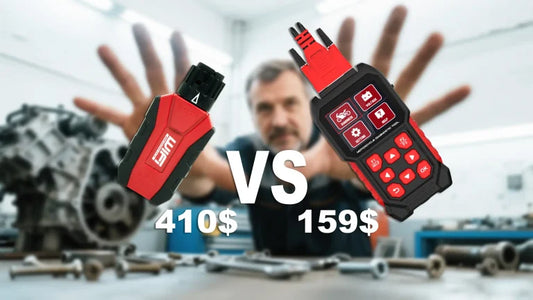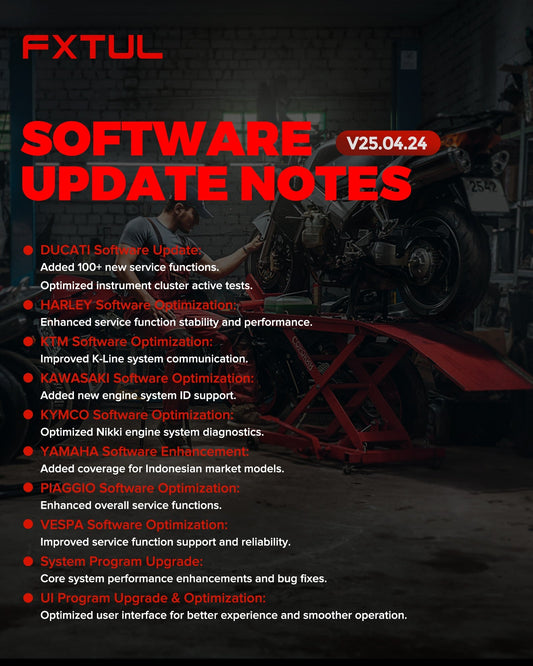For carburetor-equipped Harley-Davidson Sportster 883 models, that metal contraption isn't just a device for mixing fuel and air—it's the very essence shaping this American motorcycle's unique character. However, ethanol-blended gasoline, extended periods of storage, and dust can all clog the carburetor's internal fuel passages and orifices, triggering a series of issues:
· Difficulty starting, especially when cold.
· Unstable idle or stalling.
· Sluggish acceleration, lack of power, feeling like it's “starved for fuel.”
· Abnormally high fuel consumption.
If you're experiencing these issues, a thorough carburetor cleaning might just be the best remedy.
Preparation and Safety Precautions
Required Tools and Materials:
1. Basic Tools: Complete socket wrench set (metric/imperial), box-end wrench, screwdrivers (Phillips, flathead), needle-nose pliers.
2. Specialized Tools: Carburetor cleaner, carburetor cleaning kit (includes new main jet, idle jet, needle valve, seals, etc.).
3. Auxiliary Materials: Compressed air (or high-pressure air pump), clean container (for small parts), gloves, safety goggles, work light.
4. Consumables: New engine oil and air filter (cleaning before replacement is recommended).
Safety First:
· Work in a well-ventilated area, away from open flames! Carburetor cleaner is flammable and toxic.
· Wear gloves and safety goggles to protect skin and eyes.
· Operate only after the vehicle has cooled to avoid burns.
· Disconnect the battery negative terminal to prevent accidental short circuits.
Carburetor Removal Procedure
Step 1: Drain Fuel and Disconnect Fuel Lines
· Turn off the fuel switch (located at the bottom of the fuel tank).
· Place a container under the carburetor, loosen the carburetor drain screw, and drain the fuel from the float chamber.
· Using pliers (you may need to grip it with pliers to prevent damage), carefully disconnect the fuel line connected to the carburetor.
Step 2: Remove Air Filter Housing
· Use a screwdriver or socket to remove the mounting screws securing the air filter housing.
· Carefully extract the entire air filter assembly, exposing the rear end (air intake) of the carburetor.
Step 3: Disconnect Wiring and Cables
· Unplug the wiring harness connector from the carburetor.
· Locate and disconnect the throttle cable and choke cable (if present). Typically, you'll need to loosen the lock nut to remove the cable from the carburetor arm.
Step 4: Loosen Clamps and Remove Carburetor
· Use pliers or a wrench to loosen the two hose clamps connecting the carburetor's front end (engine side) and rear end (air filter side).
· You can now carefully remove the entire carburetor assembly from between the engine and frame. You may need to rock it side-to-side and adjust the angle slightly.
Thorough Disassembly and Cleaning
Warning: Perform disassembly on a clean workbench, and it is highly recommended to photograph each step and the original position of all parts.
Step 1: Disassemble the Float Chamber
· Remove the screws at the bottom of the float chamber and carefully lift it off.
· Note the internal float, secured by a pin. Gently push out the pin to remove the float and its connected needle valve. The needle valve's conical tip is extremely precise—do not damage it!
Step 2: Remove the Main Jet and Idle Jet
· Using an appropriate screwdriver, remove the main jet (typically larger) and idle jet (typically smaller) from the bottom of the carburetor body.
· This is the core of the fuel system and the most prone to clogging.
Step 3: Clean All Components
1. Spray cleaner: Apply carburetor cleaner to all parts, especially the main jet, idle jet, needle valve, float chamber, and all visible small fuel passages. Ensure foam emerges from every orifice.
2. Dry with compressed air: Thoroughly blow out every component and orifice on the carburetor body using compressed air. This is crucial for ensuring no residue remains.
3. Inspect and replace: Check the float for damage (shake it to listen for liquid sloshing). It is strongly recommended to use a purchased carburetor repair kit to replace all seals, gaskets, and orifices to ensure optimal sealing and performance.
Reassembly and Adjustment
Step 1: Reassemble the Carburetor
· Reinstall all parts in the reverse order of disassembly. When installing new gaskets, apply a small amount of petroleum jelly or engine oil to facilitate installation and prevent tearing.
· Pay special attention to:
· Correct installation of the float and needle valve.
· Tighten all bleed holes securely, but avoid over-tightening to prevent thread damage.
· Ensure the float chamber is seated correctly and screws are evenly tightened.
Step 2: Reinstall Carburetor and Connections
· Carefully reinstall the carburetor onto the vehicle. Connect the front and rear hoses and tighten the clamps to ensure no air leaks.
· Reconnect the throttle cable, choke cable, and electrical connectors.
· Reconnect the fuel line.
· Reinstall the air filter housing and replace the air filter with a new one.
Step 3: Basic Adjustment
1. Turn on the fuel switch and wait several minutes for fuel to fill the float chamber. Inspect all connections for leaks.
2. Connect the battery and prepare to start the engine.
3. Start the vehicle: May require choke operation. After starting, allow the engine to idle until reaching operating temperature.
4. Adjust idle speed: Use a Phillips screwdriver to adjust the idle screw on the carburetor, stabilizing idle at approximately 1000-1100 RPM (refer to owner's manual).
5. Adjust the mixture ratio (if necessary): The carburetor typically has a mixture screw. For initial adjustment, fully tighten it then loosen by 1.5–2 turns as a baseline. Fine-tuning requires reference to spark plug color or engine response; beginners should make minor adjustments near the baseline value.
Frequently Asked Questions and Expert Advice
· Harder to start after cleaning?
· Check for missing gaskets causing air leaks, ensure fuel lines are properly connected, and verify the choke cable returns smoothly.
· Idle still unstable?
· A metering orifice may not be fully cleaned, or the fuel-air mixture ratio requires fine-tuning. Inspect vacuum lines for cracks.
· Acceleration still sluggish?
· Main metering orifices or main needle may remain clogged, or the accelerator pump (if equipped) may be malfunctioning.
· Expert Advice:
· Photograph each step during operation for optimal reference during reassembly.
· Patience and precision are key to success—never use brute force.
· If unsure or issues persist after cleaning, seek assistance from a certified Harley-Davidson technician.
Feel the renewed power
A thorough carburetor cleaning not only fixes the problem but also deepens your connection with your beloved bike. When you twist the throttle again and hear that V-Twin engine roar smoothly and powerfully, all the effort is worth it. Savor the satisfaction of doing it yourself—ride safely!




